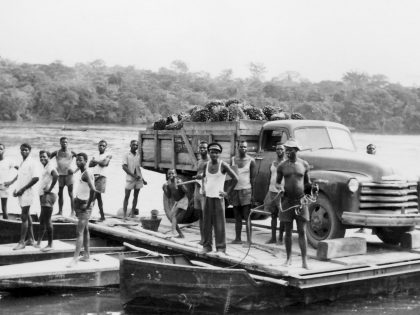Mapping the African land rush
The consequences for land grabbing on the African continent could be devastating for the development goals of nations in the long term.

Image credit Andrea Moroni via Flickr.
In 2013, the journalist Fred Pearce, one of the most authoritative environmental journalists in the United Kingdom, published a book, The Land Grabbers: The New Fight over Who Owns the Earth, in which he details how African governments are selling long leases on large tracts of land to people with dubious track records, and no obvious agricultural experience. In South Sudan for example, it was rarely clear who had sold what land to whom, as leases on hundreds of thousands of hectares were granted under poorly written contracts without basic definitions of right to land and of compensation for land.
Since the 2007-08 commodity price boom there appears to have been a surge in Large Scale Land Acquisitions (LSLAs) in developing countries, especially through Foreign Direct Investments (FDI). Most available information came from media reports because timely and reliable data on land acquisitions is scarce for reasons that include difficulties tracing the activity of financial investors, and reluctance of host governments to report deals that may be politically sensitive.
However, successive efforts to collect data systematically and a vast literature on case studies have since improved the availability of data and confirmed a trend of increasing interest in international land-based investments, leading to fears of “land grabs.”
The International Land Coalition in partnership with several research centers has published Land Matrix which includes transnational and domestic deals (purchase, lease or concession), initiated since the year 2000 and covering an area of 200 hectares or more. These records are derived from a variety of sources, including a crowdsourcing function of the website.
The largest number of acquisitions since 2000 has been recorded in Africa.

Investments potentially offer crucial opportunities to recipients, but the possible risks of LSLAs are associated with property rights in the first place and with the issue of land concentration.
The current wave of land acquisitions is taking place in contexts where many people have only insecure land rights, leaving them vulnerable to dispossession. This has clearly emerged both in the case studies literature in Africa and in econometric analysis mainly based on Land Matrix.
In a study on Sub-Saharan Africa, Cotula et al. (2009) observe that most if not all productive land targeted for potential investment was likely to have already been claimed by farmers, herders, hunters or foragers, and point out that there may be substantial negative implications in the context of complex and insecure land rights, essentially because existing land uses and claims may go unrecognized.
Is the issue between foreign investors and people? In a provocative article in 2011, Liz Alden Wily wrote that while discontent in the current land rush focuses on foreign enterprise, the problem is fundamentally between people, especially the rural poor and the state. The degree of legal protection of customary land rights is crucial, and the actual wave of FDI may discourage progress in this direction.

National and especially international investors have targeted Africa with massive deals, a pattern of acquisitions that does not depend on the concentration of investments in sectors that usually operate on large scale. The data indicate acquisitions of average and median sizes of respectively 10 and 48 thousand hectares, often with government discretionary allocation.
The combination of commercial pressure on land and insecure rights in Africa, where rising land inequality is already a problem may lead to “excessive” land concentration, which is a strong determinant of income inequality. We know that asset inequality has a negative impact on long term growth and that high levels of inequality once established are very difficult to reverse. It would be wise to worry now about the possible consequences of the African land rush.


